No doubt you have heard about the bushfire disaster that is still going on in Australia. The Australian bushfires have been burning for over 4 months now and have devastated almost 11 million hectares of land. As I write this blog, over 2000 homes have been destroyed, 23 people have lost their lives, and it is estimated that over 1 billion animals have lost their lives! It is hard to fathom.
A Nature Photographer’s View of the Australian Bushfires
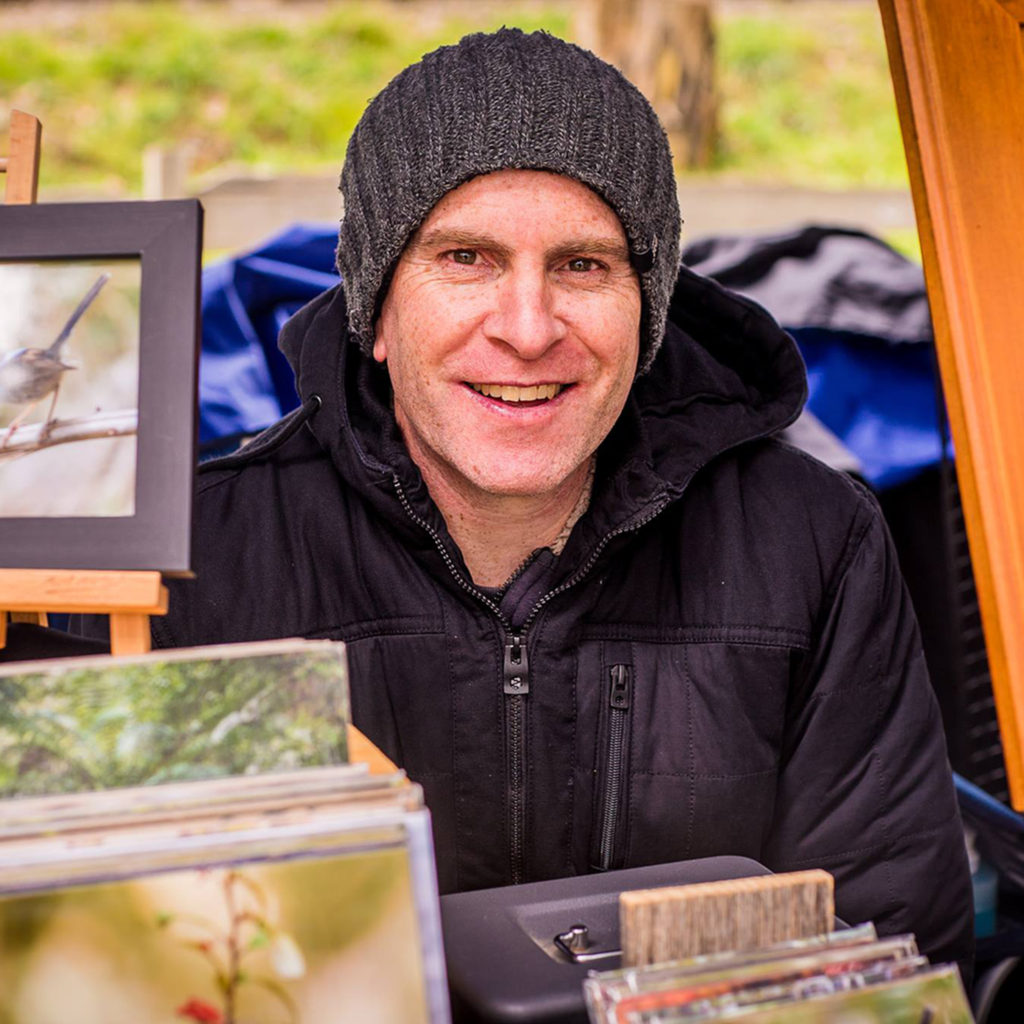
My name is Barry Callister. I am a Nature Photographer living with my wife and daughter on the Mid-North Coast of New South Wales in Australia. We are around 20 minutes north of Coffs Harbour.
I find nature inspiring. When I’m out in the bush taking photos, I always feel at peace. I adore all the unique and lovable animals we have here in this country, and the amazing scenery they call home.
Though my family and I have not been directly impacted by the fires (the closest one came within 15 to 20kms of our home), I have most definitely been affected by them.
Australia is Burning
The heading above in not an understatement – Australia is burning!
As a nature photographer, it breaks my heart to see our stunning landscape going up in flames. And this is not just because I love to look at it and photograph it, but because Australians are losing their homes, their possessions and their lives. The ripple effect of these fires will echo through our society and our economy for some time to come.
What really tears at my soul the most though is the loss of animal life. Here in Australia we have some of the most unique animals in the world. These animals do not have the same resources to protect themselves that we do. They have been helpless during this disaster. Especially animals like the Koala that can’t outrun a bushfire.
For many years to come we may not know the true impact these fires have had on our animals. It will take a long time for the effects on the ecosystem to become apparent. The loss of just one species can have a devastating effect on so many others. I hope that we do not see an extinction as a result of these fires.
Smoke and Ashes in Suburban Streets
The closest fire to us was within around 15 or 20kms (9 or 12 miles). If the wind had changed direction in the wrong way, we could have been in trouble. We live in a semi-suburban area. We are in a housing estate, but we do have bush and tall Gum trees close to us.
These are photos I took in our street at around 5pm on the 8th of November 2019. This eerie orange light descended on us mid-afternoon and hung around for quite some time. We also had burnt leaves and ash falling all around us. Some of the leaves were still warm. This was debris that had been blown over 15kms from the Liberation Trail fire.
Below is some video footage I took on the day. The last part of the footage shows the burnt leaves and ash in our swimming pool.
The Media Spin on the Australian Bushfires
It’s easy to look at the Australian Bushfire situation and become despondent. The media are skilled at creating a negative and sometimes morbid spin on world events. They toy with our emotions and make things seem worse than they are in order to get us to watch, and hence increase their ratings. There is no reward in reporting the truth anymore.
I don’t mean to diminish the fires here, or to say that they are not an incredible tragedy – of course they are. However the thing that the news won’t report to you is how quickly the Australian environment and its people bounce back from events like this.
A Drive Through Fire-Affected Areas
On Sunday the 12th of January 2020, my family and I took a drive through Nana Glen and Glenreagh; two New South Wales communities that were heavily impacted by the Australian bushfires in November of 2019.
The fire tore furiously through the bush here and caused an incredible amount of damage. Going there now however, it is amazing how much nature has sprung back.
The images below show the extent of the devastation. Trees that are probably 10 meters high or higher burnt from the ground to the tips of their leaves. At ground level, nothing is left but dirt and stone.
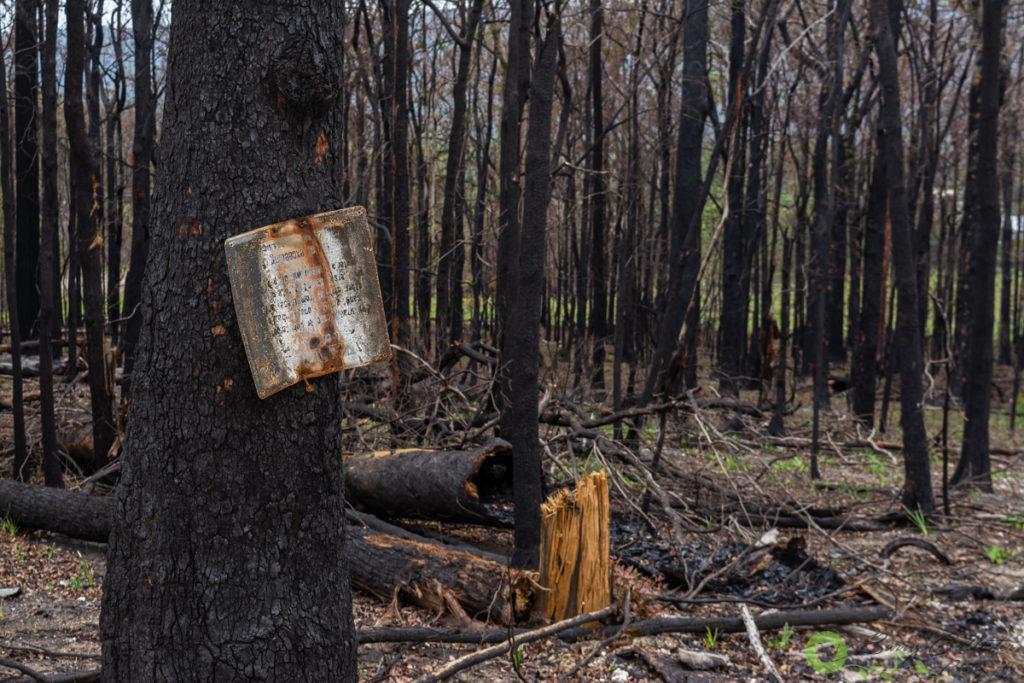
Nothing was spared on either side of this road. Bare earth is all that remains of where homes once stood.
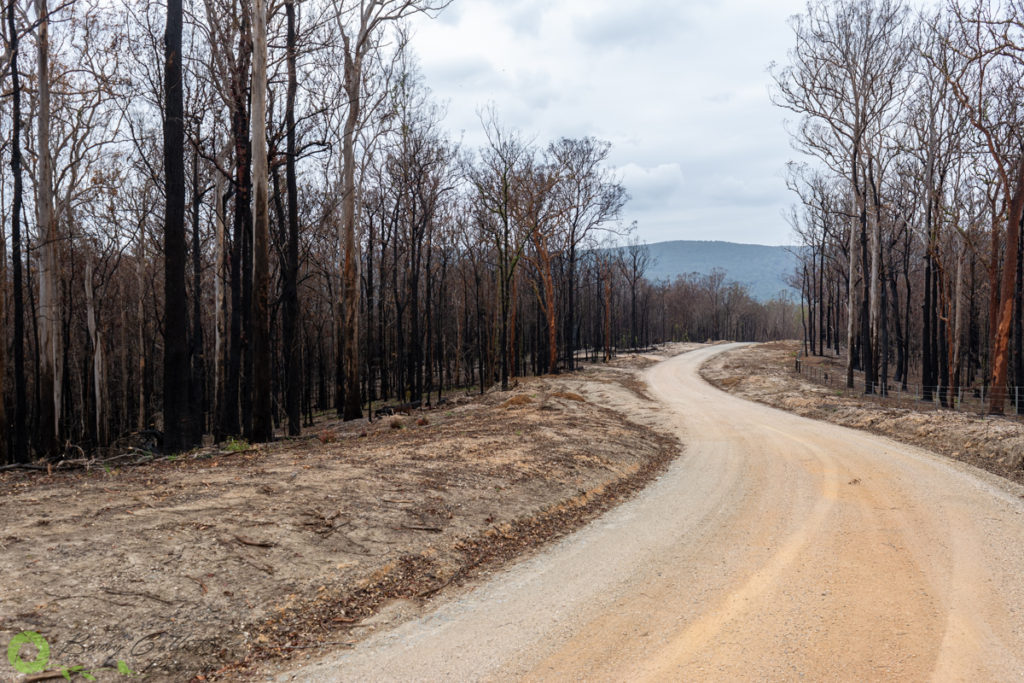
The flames engulfed this old truck. The twisted, liquid-like shapes on the windscreen area and bonnet are alloy from the vehicle or possibly other vehicles nearby, which melts at temperatures of several hundred degrees Celsius.
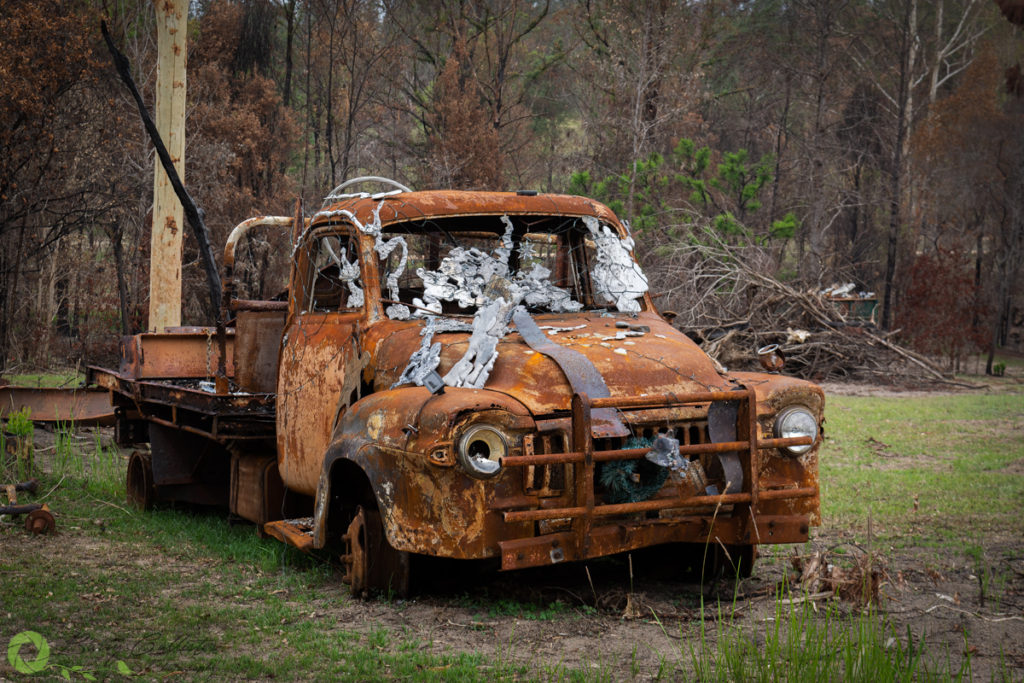
An old horse stands on the barren ground that would once have been thick with grass for it to eat.
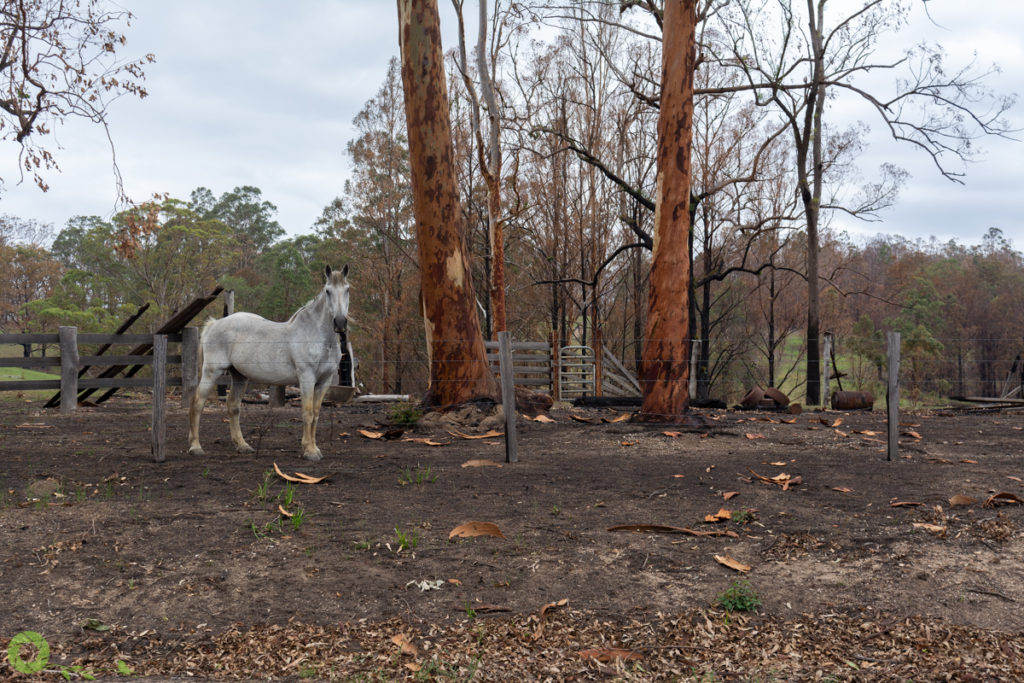
Nature Bounces Back
The photos below show you how incredibly fast nature will bounce back and regrow after a bushfire.
New shoots spring forth from the charred bark of trees. Sword grass and other grasses burst up through the scorched earth. Likewise, Bracken Ferns grow and quickly reclaim their former land.
Insect life comes back to the land too. While photographing some burnt beer bottles by the side of the road, I came across this beetle having a bit of trouble with an army of ants.
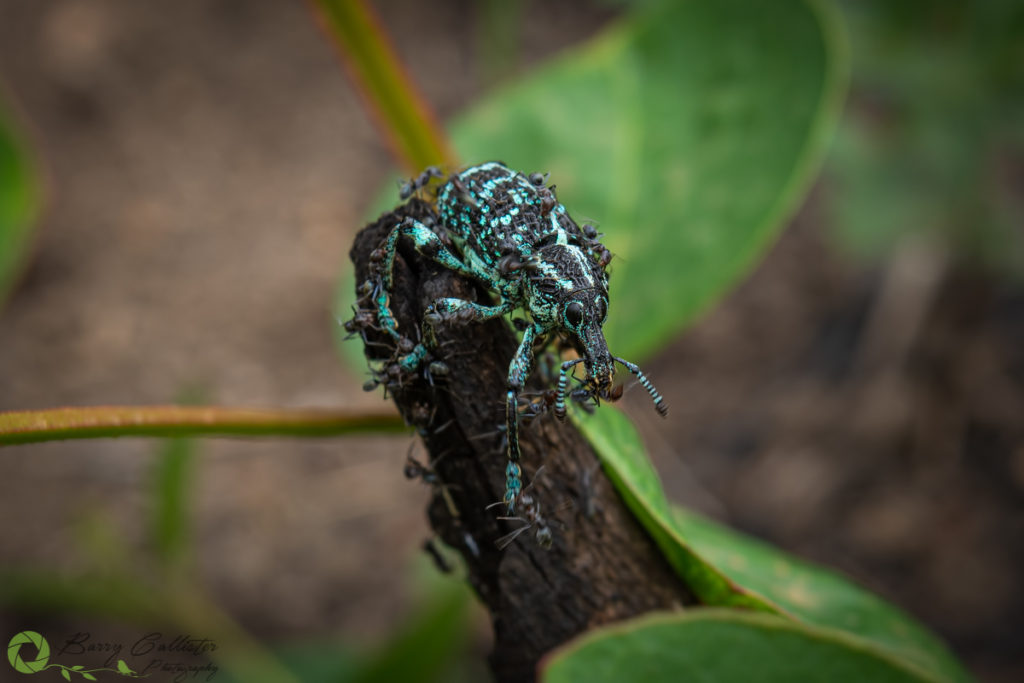
The Impact of the Australian Bushfires
As is usual in events like this, there are a lot of theories floating around about who or what is to blame. A lot of these fires were started by arsonists (many of whom are firefighters themselves). Many started from dry-lighting strikes.

Naturally, the term Climate Change is being thrown around too. Whether you believe that Climate Change is a reality or not, there are signs everywhere that serve to prove it’s validity. Our weather patterns have drastically changed, we are experiencing hotter days, stronger winds, and lower-humidity days which all contribute to dangerous fire conditions.
In other areas of the world, there are unprecedented blizzards, numerous and devastating tornadoes, floods and various other weather-related disasters.
I believe that instead of placing blame, or ridiculing others for their theories or points-of-view, that our energy is better-served in helping each other to overcome events like this.
I don’t know when the Australian bushfires will go out, or what the true impact of them will eventually be. What I do know is that I have seen how Nature and Humankind rebound. I have seen new growth from the ashes. Watched people rebuilding. I have seen animals and insects return to the blackened earth.

Things will get better. They already are. Trees and plants will regrow and people will grieve their losses and emerge stronger than before.
Don’t cry or mourn for Australia. Wish us strength. Donate money if you feel that you can. If you can’t, it doesn’t matter. Others will continue to give, and so much has been given already.
Just remember the images above of fresh, green growth and know in your heart that everything will eventually be alright. And if you are planning a trip to Australia, please come. We need your tourist dollars and the majority of the country is perfectly safe.
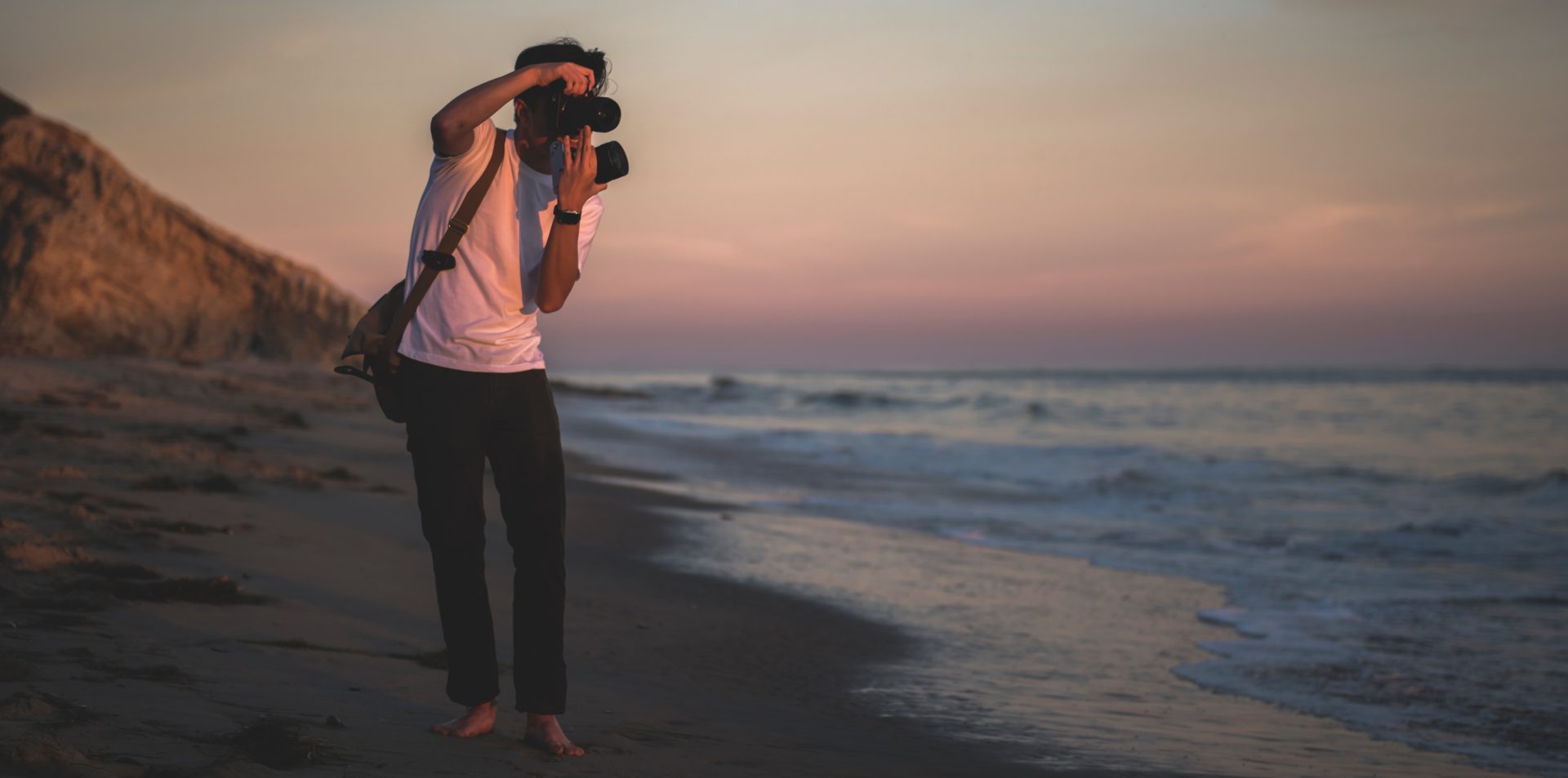

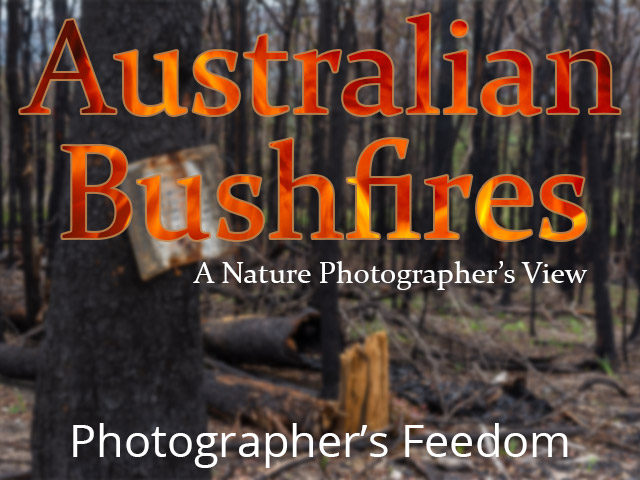











Great post Barry, and beautiful photographs.
Thank you Ruan. Appreciate your comment. Thanks for reading the post.
Very nice post, Barry! Still heartbreaking for all the millions of animals…
Thank you Ruta.